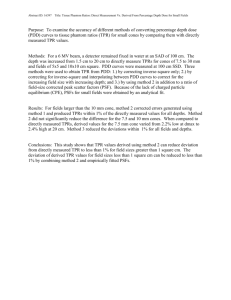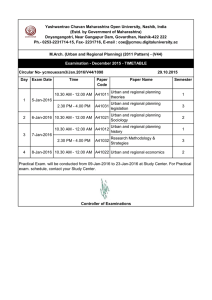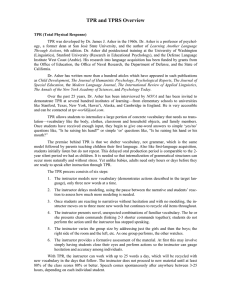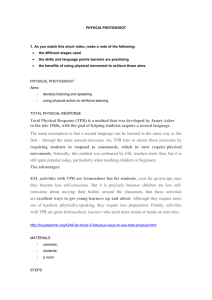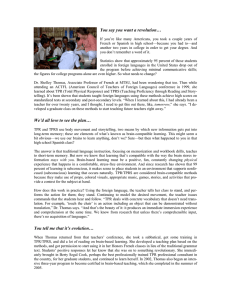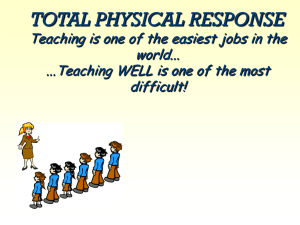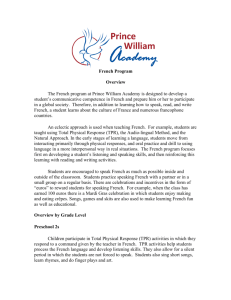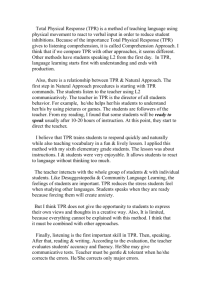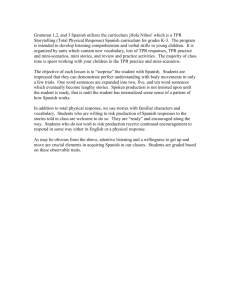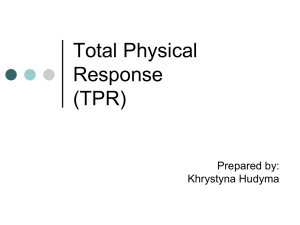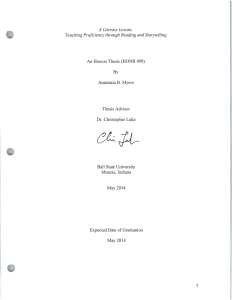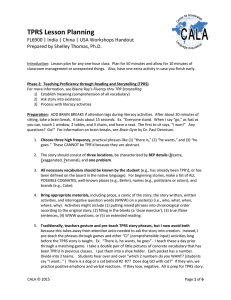TPR Summary Total Physical Response Center for Accelerated Language Acquisition
advertisement
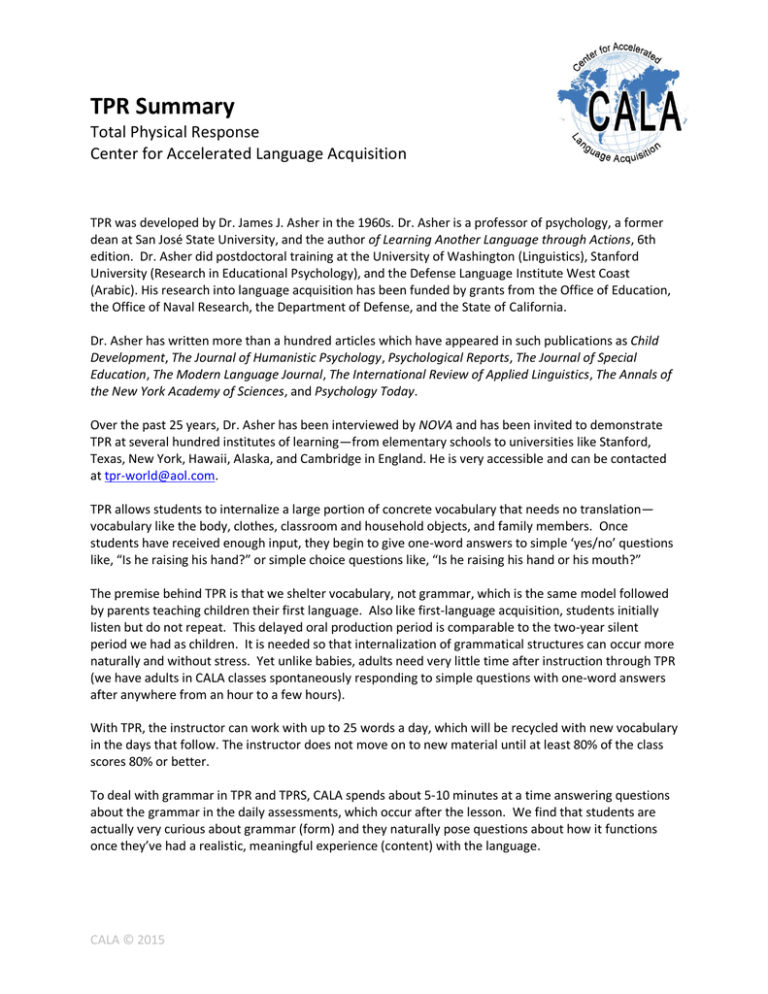
TPR Summary Total Physical Response Center for Accelerated Language Acquisition TPR was developed by Dr. James J. Asher in the 1960s. Dr. Asher is a professor of psychology, a former dean at San José State University, and the author of Learning Another Language through Actions, 6th edition. Dr. Asher did postdoctoral training at the University of Washington (Linguistics), Stanford University (Research in Educational Psychology), and the Defense Language Institute West Coast (Arabic). His research into language acquisition has been funded by grants from the Office of Education, the Office of Naval Research, the Department of Defense, and the State of California. Dr. Asher has written more than a hundred articles which have appeared in such publications as Child Development, The Journal of Humanistic Psychology, Psychological Reports, The Journal of Special Education, The Modern Language Journal, The International Review of Applied Linguistics, The Annals of the New York Academy of Sciences, and Psychology Today. Over the past 25 years, Dr. Asher has been interviewed by NOVA and has been invited to demonstrate TPR at several hundred institutes of learning—from elementary schools to universities like Stanford, Texas, New York, Hawaii, Alaska, and Cambridge in England. He is very accessible and can be contacted at tpr-world@aol.com. TPR allows students to internalize a large portion of concrete vocabulary that needs no translation— vocabulary like the body, clothes, classroom and household objects, and family members. Once students have received enough input, they begin to give one-word answers to simple ‘yes/no’ questions like, “Is he raising his hand?” or simple choice questions like, “Is he raising his hand or his mouth?” The premise behind TPR is that we shelter vocabulary, not grammar, which is the same model followed by parents teaching children their first language. Also like first-language acquisition, students initially listen but do not repeat. This delayed oral production period is comparable to the two-year silent period we had as children. It is needed so that internalization of grammatical structures can occur more naturally and without stress. Yet unlike babies, adults need very little time after instruction through TPR (we have adults in CALA classes spontaneously responding to simple questions with one-word answers after anywhere from an hour to a few hours). With TPR, the instructor can work with up to 25 words a day, which will be recycled with new vocabulary in the days that follow. The instructor does not move on to new material until at least 80% of the class scores 80% or better. To deal with grammar in TPR and TPRS, CALA spends about 5-10 minutes at a time answering questions about the grammar in the daily assessments, which occur after the lesson. We find that students are actually very curious about grammar (form) and they naturally pose questions about how it functions once they’ve had a realistic, meaningful experience (content) with the language. CALA © 2015 TPRS Summary Teaching Proficiency through Reading and Storytelling Center for Accelerated Language Acquisition Teaching Proficiency through Reading and Storytelling (TPRS) is used to teach abstract vocabulary that cannot be covered through Total Physical Response (TPR) alone. The TPRS method was developed as an outgrowth of TPR by a high school Spanish teacher named Blaine Ray in the 1990s. The method begins with a small story created by the teacher, and the story is constructed around the repetition of three new abstract phrases (e.g., “there is,” “she invites him,” “he likes to study,” etc.). A more descriptive name for the process would be “storyasking” since the teacher is constantly asking the story into existence by soliciting story details from the language learners. It shifts students from answering the lower-level questions of TPR (e.g., yes/no, choices, or who/what/why words) to answering questions that require higher-level thinking skills involving fantasy creation and personalization of the original story. The teacher has a structure of questioning that must be followed, yet, at the same time, he or she must be able to take this line of questioning into whatever direction the students take the story. Skilled teachers can keep the questions geared toward vocabulary and grammar needed for the curriculum, while at the same time giving the illusion to the students that they are in control of creating the story. TPRS should be preceded by TPR until students have a vocabulary base of about 100-150 words, which takes about 1-2 weeks of foreign language classes at the high school level and 2-4 weeks of college (since there are fewer college sessions per week). To deal with grammar in TPR and TPRS, CALA spends about 5-10 minutes at a time answering questions about the grammar in the daily assessments, which occur after the lesson. We find that students are actually very curious about grammar (form) and they naturally pose questions about how it functions once they’ve had a realistic, meaningful experience (content) with the language. CALA © 2015
